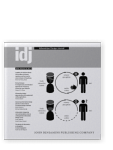Vol. 22:3 (2016) ► pp.237–246
Information design opportunities with augmented reality applications
Interaction design and augmented reality applications map information relationships between physical and virtual worlds. Mobile devices provide new opportunities for integrating digital graphics, text, and sound with the surrounding physical environment. Designers and artists are experimenting with innovative applications that present challenges in information design research and praxis. This paper explores the following dimensions of augmented reality that are integral to applications in information design that use this technology: semiotics of space and time; multisensory design; relational aesthetics, and kinesthetic interaction that incorporates gestures, physical movement, and embodiment into the interactive process.
This article is currently available as a sample article.
